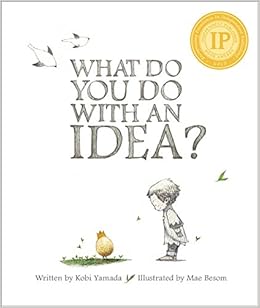Here's what I do:
Every Monday Morning, we spend the first 10 minutes of class discussing Growth Mindset. It doesn't always look the same, because students don't all learn the same way. Sometimes, we watch a YouTube video related to developing, learning about, or thinking about growth mindset (there are so many to choose from). Other days, we involve some art, collaborative discussion, movement activity, or goal setting/reviewing/revising.
We will see how/if this will increase learning and test scores at the end of the year, but I have noticed a huge difference in my students' attitudes towards math this year. I have more students than ever that telling me math is their favorite subject! In my earlier post, Creating a Self-Paced Math Classroom, I highlight the culture I have created that allows students a lot of time to play with math ideas. While they are working, I have noticed that many of my students have taken the growth mindset to heart and remind their peers of these ideas while working through their productive struggle. It is not uncommon for students to change their peer's comments by throwing in a "yet" after comments like, "I can't get this". One students even calls me Mrs. Yet, I love it!
My personal favorite days, however, are reading a picture book to my 6th graders. Even though they are big bad middle schoolers now, they still really LOVE being read to, especially picture books. Below, I have listed my favorite books and short activities or classroom lesson this book lead to for the day (spoiler alert, many of these books lead to STEM lessons), I have done to support each lesson.
Rosie Revere, Engineer

The Most Magnificent Thing

I LOVE to read this one before our students' first STEM challenge of the year. It really highlights the importance and learning that comes from the iterative process of design, create, try it out, make it better. I also LOVE the discussion of how the end product does not need to look exactly like you imagine to be magnificent. (Also, discussion on keeping calm when frustration comes knocking.) So many awesome topics of discussion from this book!
Can I Play Too?

Another great read to introduce before beginning a STEM challenge. These lovable characters learn to deal with challenging constraints to create a fun outcome. We discuss the negative effects of holding on to ideas that do not work and ways to think outside the box and be flexible with your problem solving (which also relates to math class). Also a great read for developing the importance of perseverance.
Ish

I love that this book allows students to find the beauty in everything, even the imperfect. It is also a great time to discuss building up words (with each other and yourself). We like to listen to the songs, The Power of Yet and Who Says during our work time, everyday, and particularly after reading this book.
The Dot

Your Fantastic Elastic Brain

This is another great read for the beginning of the year. I also use a lot of YouTube videos to introduce what happens to you brain during productive struggle. We discuss synapses that fire when we make mistakes and how our brain grows. I refer back to this all the time throughout the year, and celebrate my own mistakes saying, "Oh yeah! Synapses firing!" and make a gesture to my growing brain. My favorite part is when the students say it to each other.
What Do You Do With a Problem

This is a great one to read and refer back to Your Fantastic Elastic Brain, our brain grows when we try something scary. We reflect on a fear we are currently facing and what we can do to tackle it head on. Students write their fear and share them with a partner. I also like to read this book when we are in the middle of learning a particularly challenging topic. We discuss the happiness and beauty we will find in the math once we master the concept (then you need to make sure all students master something that day).
What Do You Do With an Idea

This book is also great to read when the students are working on designs for their STEM challenges. We have created a culture of sharing all ideas, even the crazy ones because you never know when/if you might need to fall back on the design or an aspect of it after they've tried all of the safe or traditional ones.
The Girl Who Never Made Mistakes

I teach a lot of students dealing with perfectionism. STEM challenges are a great way to allow students to experience failure in a safe environment. We find the beauty and learning that comes from making mistakes and the freeing feeling you get after making one. I like to give my students a challenge early in the year that they will fail at. I start my follow up discussion with, OK, we've got that out of the way, now let's begin learning. We point out the learning we gain from making mistakes and the freedom we have moving forward after it is over. Mistakes allow us to feel more open to trying new things and give us a more fun and fulfilling life.
Books are such a fantastic way to introduce new concepts and deal with social-emotional topics with students. What are your favorite growth mindset picture books to use in your class? Have you tried any of the ones above? What have you done with your students as a follow up? Please share below, and thanks for all you do to help your students develop a growth mindset!
No comments:
Post a Comment